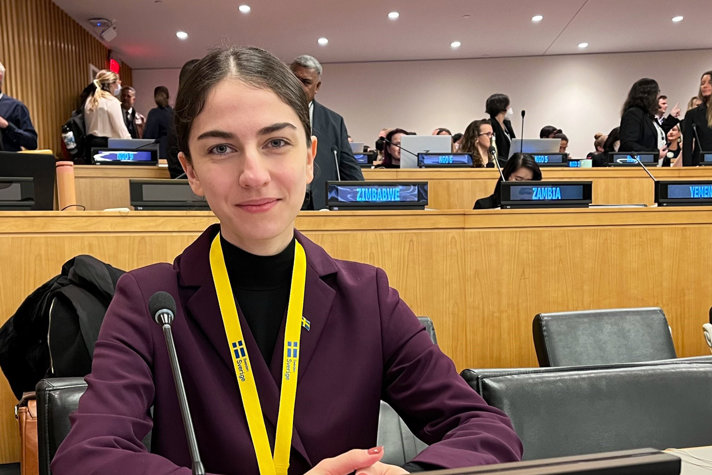Global treaty to protect the ocean
Published
Sweden has long played a leading role in the work on international marine environments. On 4 March 2023, the countries of the world agreed on the High Seas Treaty, aimed at protecting the world’s oceans. The Treaty establishes global rules to limit environmental impacts and create protected marine areas beyond national jurisdiction, which make up 95 per cent of the volume of the world’s oceans. The Treaty now makes it possible to achieve the goal of protecting 30 per cent of the earth’s surface.

The process of adopting a global treaty to protect the world’s oceans beyond national jurisdiction began more than 15 years ago. As holder of the Presidency of the Council of the European Union, Sweden has led the negotiations on behalf of the EU and its Member States together with the European Commission. The Treaty stipulates that environmental impact assessments must be completed for all types of marine activity in areas beyond national jurisdiction. It also sets out rules and procedures for creating protected marine areas with the aim of conserving and sustainably using marine resources. Marine biodiversity is vital to all life on earth. Half the oxygen we breathe is produced in the oceans.
Major step towards implementing the 2030 Agenda
The Treaty contributes to implementing the 2030 Agenda and achieving the following objectives under Sustainable Development Goal 14 (life below water): to sustainably use marine ecosystems, protect vulnerable parts of the world’s oceans, limit pollution and promote capacity-building and technology transfer in developing countries. The Treaty is also essential to achieving the goal of protecting 30 per cent of the earth’s surface by 2030.
What the Treaty means for Sweden
After ratifying the Treaty, countries must ensure that protected marine areas and other measures under the Treaty are respected. Sweden must make sure that environmental impact assessments are implemented for activities in marine areas beyond national jurisdiction so as to ensure that Swedish citizens, businesses and vessels comply with the Treaty. The Treaty also sets out regulations governing both marine scientific research and commercial use of genetic resources from marine areas beyond national jurisdiction and the deep sea. Sweden will also promote capacity-building and marine technology transfer in developing countries to support implementation of the Treaty. Swedish research will provide both direct and indirect benefits.
Indirect impact in coastal waters
The Treaty is directly applicable in the deep sea and in areas beyond national jurisdiction. This includes two-thirds of the surface of the world’s oceans – or 95 per cent of their volume – and the deep sea, which refers to the areas beyond the continental shelves.
In our part of the world, the Treaty applies to the majority of the Atlantic Ocean, including parts of the Norwegian Sea, the Greenland Sea and the central Arctic Ocean. Although the Treaty does not cover the marine areas closest to Sweden, it will affect our coastal waters indirectly. Marine ecosystems are complex and many species migrate across large marine areas. For example, eels, tuna, herring, mackerel and whales all migrate between Swedish marine areas and those beyond national jurisdiction.
Sweden puts oceans on the agenda
Sweden has long played a leading role in the work on international marine environments. Sweden and Fiji co-organised the UN’s first Ocean Conference in 2017. The oceans have come increasingly into focus in international climate negotiations, and awareness of their importance for all life on earth and our well-being has increased substantially. Together with other EU Member States, Sweden has worked actively to ensure protection of marine biodiversity under the UN Convention on Biological Diversity (CBD), not least within the scope of global targets for protection of biodiversity by 2030. Sweden has successfully pushed for the historic UN decision to initiate negotiations on a legally binding global agreement concerning plastic pollution. These negotiations will be finalised in 2024, and the agreement will be key to reducing the amount of plastic pollution in the oceans.
Ratification of High Seas Treaty
The High Seas Treaty is expected to be formally adopted by the UN in June 2023. It enters into force once 60 States have ratified it. Then the work to create protected marine areas can begin.

 X
X